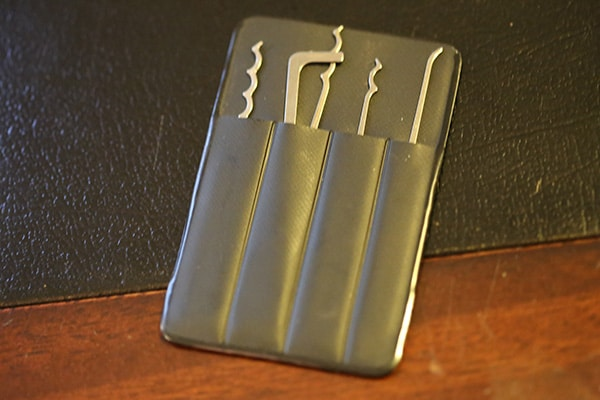Mastering the Art of Lock Picking: A Practical Guide to Pin Tumbler Locks
2024-10-15 17:21
Lock picking may seem like a skill reserved for criminals, but there are legitimate reasons for learning it. Understanding how locks can be easily bypassed reveals that they mostly provide an "illusion of security." This awareness helps us realize that locks aren't foolproof, and other layers of security are necessary to protect our homes and loved ones.

Another practical benefit is self-reliance. If you ever get locked out of your house or car, knowing how to pick a lock can save you time, money, and the hassle of calling a locksmith. Plus, it’s satisfying to solve this problem on your own.
In certain situations, lock picking can even save lives, like when a person needs to quickly access a loved one’s home during an emergency without damaging property.
The skill itself is also fun and “cool.” It taps into the inner secret agent we all wish we could be, and with practice, you can develop it into a neat hobby. Competitions and lock-picking events exist for enthusiasts who want to test their abilities.
Legal Aspects of Lock Picking In most places, owning Lock Picking Sets is legal as long as they’re not used for illegal entry. However, some states have stricter laws, where possessing these tools can be seen as evidence of criminal intent, so always check local regulations.
.jpg)
How Pin Tumbler Locks Work Pin tumbler locks are the most common and consist of a plug inside a cylindrical casing. When the correct key is inserted, it lifts the key pins and driver pins inside the lock to align with the “shear line,” allowing the plug to turn and unlock the door. Lock picking essentially mimics this process by manually manipulating the pins to align them with the shear line.
Tools for Picking a Lock The basic tools you’ll need are a tension wrench and a pick. The tension wrench applies rotational force to the plug, while the pick lifts the pins to the shear line. Rakes, which lift multiple pins simultaneously, are also commonly used.
Lock Picking Technique
- Insert the Tension Wrench: Put the wrench at the bottom of the keyhole and apply light pressure in the direction the key would turn.
- Insert the Pick: Slide the pick into the top of the lock.
- Scrub the Pins: Move the pick back and forth while lifting the pins. Continue applying light pressure with the wrench.
-
Set the Pins: As you lift the pins, they’ll align with the shear line. Continue until all the pins are set and the lock opens.

The process is more art than science and may take practice. Start with easy locks and gradually move to more challenging ones.
With dedication, you can become proficient in Lock Picking, a handy skill for everyday situations—but always use it responsibly!
In conclusion, learning the art of lock picking offers valuable insights into the limitations of security while providing a practical and useful skill. Whether for emergency situations, helping friends, or simply as a hobby, lock picking can increase self-reliance and problem-solving capabilities. As with any skill, practice is key to becoming proficient, and it's essential to use this knowledge responsibly and within the bounds of the law. By understanding how pin tumbler locks work and how easily they can be bypassed, you not only enhance your personal security awareness but also gain a unique, rewarding skill that can come in handy in everyday life.
In conclusion, learning the art of lock picking offers valuable insights into the limitations of security while providing a practical and useful skill. Whether for emergency situations, helping friends, or simply as a hobby, lock picking can increase self-reliance and problem-solving capabilities. As with any skill, practice is key to becoming proficient, and it's essential to use this knowledge responsibly and within the bounds of the law. By understanding how pin tumbler locks work and how easily they can be bypassed, you not only enhance your personal security awareness but also gain a unique, rewarding skill that can come in handy in everyday life.

 Like Us on Facebook to enjoy 5% discount
Like Us on Facebook to enjoy 5% discount